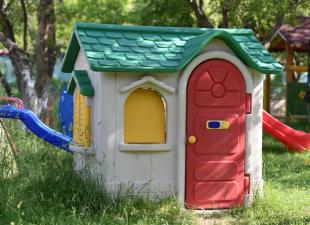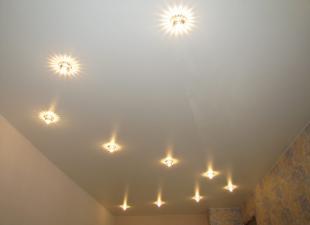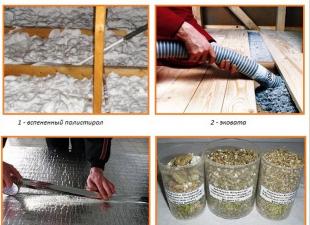In this article, we will try, without all sorts of advertising notes, to figure out what liquid wallpaper is and how to use it. Let's take a closer look at what the technology for applying liquid wallpaper with our own hands consists of, from surface preparation to the finished result. Let's start with a short introduction about the main features of this finishing material.
Briefly about liquid wallpaper
In fact, this material is a variety. In the composition of liquid wallpaper, cellulose fibers are used, which are obtained as a by-product of the wood processing industry, as well as silk fibers. To give liquid wallpaper an aesthetic appearance, a variety of dyes and decorative fillers, such as glitter or granules, are added. For fixing, the well-known KMS glue is used, which is already habitually used for gluing ordinary roll wallpaper. Actually because of the composition, they got their name. However, according to the method of application and the result obtained, this finishing material is still close to decorative plasters. It should be applied using a trowel, a special float or a spatula in the same way as putty or plaster. By the way, this determines a huge range of possible ways to use liquid wallpaper and their undoubted advantage over conventional roll wallpaper.
The main advantage of liquid wallpaper is the ability to apply it on surfaces of any even very complex shape. They can be combined and made from them applications on the walls of your apartment or house. And the result is a layer that is as similar as possible to very high-quality wallpaper. That is, the surface is warm to the touch and soft.

Their main disadvantage is their high cost. You should not immediately believe in such encouraging speeches of advertising banners that one package will be enough for you for 5-6 square meters, and even more so since they can be applied to all kinds of surfaces without careful preparation. This is not true. All the same, to get a good result, and it is really worth it and cannot be compared with ordinary wallpaper, you have to perform a thorough preparation of the walls and carefully carry out the process of applying liquid wallpaper.
It is important to consider
In addition to the price, there is also a technical aspect, which, most likely, should be written down as cons. , liquid wallpaper is applied directly to the wall, and if it has differences in surface composition or unevenness, all these defects will eventually appear on top of them. The presence of several layers of old paint, uneven putty or plaster, level drops, and, consequently, the thickness of the wallpaper layer, the emergence of metal objects (screws, nails, fittings, pipes) on the surface - all this will ultimately spoil the appearance of the result.
Video: 1 channel about liquid wallpaper
Application technology in detail
It makes no sense to simply repeat the simplest instructions for using liquid wallpaper. In addition to the instructions, it is best to pay attention to especially important points that cannot be learned from the quick start guides.
Surface preparation
Basic requirements for the prepared surface:
- uniformity;
- minimal and uniform moisture absorption capacity of the surface;
- white background color, or at least similar to the color of the wallpaper itself;
- no potholes, drops, depressions more than 2-3 mm per meter of surface;
- strength.
The first step is to get rid of all old materials such as wallpaper, paint or peeling plaster. Anything that can peel off over time with the new coating must be removed.
If possible, remove all protruding nails, screws, screws or other metal, plastic elements from the wall. If reinforcement walls or pipes protrude onto the surface, then they should be carefully sealed. Either a layer of putty 2 mm thick is suitable for this, if possible, or it is smeared with oil paint.
Bringing the surface of the wall to a level and making it perfectly flat and smooth, although desirable, is not necessary. If there are large depressions or protrusions commensurate with the entire wall or it is slightly inclined, as is often the case in old houses, then the use of liquid wallpaper, as well as the texture of plaster, will not visually highlight these defects in any way. So in this regard, you should proceed from your own capabilities. Indeed, to completely level the surface, you will need to invest significantly in plastering or wall cladding. What is important is to get rid of medium and small defects: pits, holes, depressions and protrusions more than 2 millimeters in areas less than a meter. If this is not done, then the consumption of liquid wallpaper will sharply increase and as a result, in places where their layer will "walk", spots will be visible that differ from the rest of the surface in shade.

Best of all, a uniform layer of plaster putty. This also applies to drywall walls and partitions. It is not enough to cover only the joints between the sheets.
After the surface is sufficiently leveled, it is necessary to prime it. For this, a standard deep penetration primer must be used. It is applied in 2-3 passes with a break of 3 hours between them. And only after that you can start applying a special, thicker, putty under liquid wallpaper. You can also use water-based paint for this, even facade paint. Necessarily white, without adding colors.
Cooking liquid wallpaper
Prepare liquid wallpaper for the walls in advance. Actually, virtually all types of liquid wallpaper according to the instructions are prepared for 6-12 hours, so you can start preparing even at the stage of priming the walls.
The liquid wallpaper package contains the following components:
- cellulose or silk warp fibers;
- decorative fillers;
- dry KMS glue.
Components can be packed separately in different packages, or already mixed. In the first case, you should first pour the contents of all packages in a dry form into a sufficiently large container or on a spread piece of polyethylene 1X1.5 meters and mix thoroughly. In this case, the contents should be fluffed up and not crumpled.
It is enough to fluff the liquid wallpaper with the components already mixed before adding it to the water so that there are no lumps sticking together. Although this is not important, it will help the solution to infuse more evenly afterwards.
Advice: Decorative additives such as glitter, colored powders or granules should not be mixed dry with fibers and glue. It is advisable to subsequently pour them into the water and mix them first, and then add the base of the wallpaper. This is the only way to ensure an even distribution, without the option of sticking lumps of gloss on individual fibers.
Highlights when mixing liquid wallpaper
- The amount of water required to mix the wallpaper solution should only be taken as specified in the instructions for your wallpaper.
- First, water is poured into the prepared container, and then the dry mixture is added.
- You only need to mix one bag at a time in one container. That is, you cannot mix the contents of two bags during the first batch.
- It is strictly forbidden to knead part of the package.
Violation of these simple rules can lead to a violation of the required proportions and, as a result, to uneven colors and consistency of the wallpaper layer on the walls.
It is best to mix the solution just by hand. There are no caustic or dangerous for the skin and, in general, health of components in the composition of liquid wallpaper. Stirring with a drill with a mixer attachment will have a detrimental effect on the components of the wallpaper. Quite often, the composition contains rather long fibers, which will simply break with abundant mixing. However, some wallpapers also indicate this mixing method.

Once the entire mass is saturated with water, you can leave the solution alone for a sufficiently long period of time. Depending on the manufacturer's requirements, liquid wallpaper can be infused from 6 to 12 hours. This requires technology in order for the glue to completely soften and bond the fibers.
Only after the necessary time can all the prepared portions of the wallpaper be mixed. It is best to prepare portions that are sufficient for the entire area to be covered, or at least for one wall entirely and even a little with a margin. If you apply wallpaper from different batches to one wall, then a transition may be visible, because the contrasts will slightly differ. Between adjacent walls in the corner, the differences will no longer be so noticeable. The remains from one wall can be safely added to the general solution for the next.
Usually, the manufacturer expects to apply a portion of wallpaper in one kilogram to an area of up to 5-6 square meters. However, in reality, the consumption of liquid wallpaper is slightly higher. So when calculating the total number of purchased packages of liquid wallpaper, it is better to take them at the rate of one package for 3-4 square meters. On the other hand, you can just take a couple more packages and use them only when necessary. Many hardware stores easily accept unused materials, provided that the integrity of the packaging is not compromised.
The prepared solution can remain usable for many hours, and even for several weeks when closed. However, it is unlikely that anyone will stretch the repair so much.
Once everything is ready, you can start applying wallpaper to the walls. The latter by this time should have completely dry after applying all layers of primer and paint.
Applying liquid wallpaper
The following tools can be used for application:
- trowel;
- grater (plastic or metal);
- spatula (from 18 to 80 cm);
- spray gun;
Actually, for this material, special graters are also provided, which differ from the usual ones in that they have a narrowed fabric, often made of transparent plastic, so that the process of smoothing the fibers can be controlled. The latter helps a lot when composing various applications from different types of liquid wallpaper.
The process is quite simple, similar to applying putty and in some ways even easier. You can collect a solution of liquid wallpaper simply with your hands or with a small spatula. Next, either a portion is applied to the wall, or to the tool and rubbed against the wall. You should get a layer about 2-3 mm thick. Again, check the instructions, some types of wallpaper should be applied in a thinner or thicker layer. They continue to glue the liquid wallpaper in small patches, adding new ones to the already applied area.
Advice: If the mortar does not adhere well to the wall and is too thick, you can add a little water, just no more than a liter per serving.
The grater should not be held flat against the wall, but slightly raising the front edge in motion by about 5-15 degrees in relation to the wall. The effort is insignificant, but sufficient only to distribute the solution with a layer of the required thickness.
When about one square meter is filled, before applying the next, you can smooth out the resulting area with a trowel soaked in water so that there are no lumps or grooves. Next, the next section of the wall is filled.

It's time to add some good advice. In the process of applying liquid wallpaper, the direction of movement of the trowel or spatula plays an important role. After all, it is in the direction you lead it that the fibers will be laid. For the best look, it is best to smooth out each portion in small, long strokes in different directions. In addition, movements can be done with a twisting in a circle.
Similar logic can be used to get more sophisticated options. If you constantly apply wallpaper in one area in one direction, and change the direction in an adjacent area, for example, by 45 degrees, you can form various background patterns.
In the corners, the wallpaper should be leveled in the direction from the corner, and then in the desired direction. As soon as the entire space of the wall is filled, you can finally go through with a float dipped in water and even out all the irregularities.
Finally
The remains of liquid wallpaper should not be thrown away immediately. They can still be useful in order to correct possible imperfections that appear after complete drying. Also, later, if the wallpaper is damaged, you can easily replace a small area. To do this, it is enough to abundantly moisten the wallpaper in the place of damage and remove the old layer, and glue a new one in its place. When wet, in a tightly tied plastic bag, wallpaper can be stored for up to two weeks. If it is supposed to leave a stock for later, then they should be laid out on a flat surface and dried. Next time, just add the water again and use it.
To reliably give strength to liquid wallpaper, you can apply a layer of acrylic water-based varnish on top of them. The result is a virtually washable wallpaper. However, this method does not make them completely moisture resistant, and therefore you should not apply ordinary liquid wallpaper to the bathroom or kitchen in the immediate vicinity of the sink and other sources of water and heat. For these purposes, manufacturers specially produce moisture-resistant liquid wallpaper, prudently prepared for conditions of high humidity. Their use is no different from the technology for applying conventional liquid wallpaper.
 parlini.ru Repair of an apartment, a summer residence and a house.
parlini.ru Repair of an apartment, a summer residence and a house.


